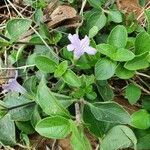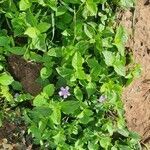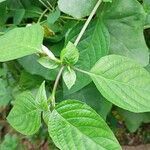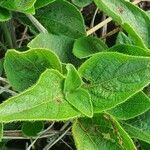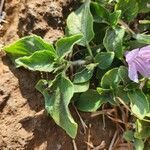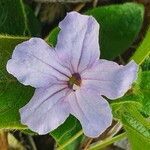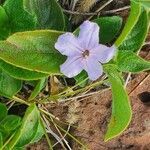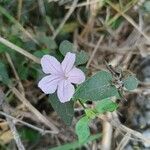Much branched, prostrate to procumbent herb. Stem 4-angled, to 50 cm tall, pubescent when young. Petiole 6-18 mm long, puberulous and sparingly pilose; blade ovate-elliptic to deltoid, 1.5-7.5 x 1.2-4.5 cm, acute at apex, obtuse at base, sparingly pilose to almost glabrous, margin entire; primary vein and secondary veins (3-4 pairs) somewhat more conspicuous on lower surface, pubescent; cystoliths numerous and conspicuous under a lens. Flowers solitary in axils of upper leaves; pedicels subquadrangular, 1-2 mm long, puberulous; bracteoles leaf-like, ovate-elliptic, 8-10 x 4-5 mm, sparingly pilose. Calyx lobes linear-subulate, 6-7 mm long, puberulous and ciliate; corolla sparingly pubescent without, pale purple to violet, 25-30 mm long, tube slightly curved, infundibuliform, 7 mm long, 2 mm wide at base, throat turned up from tube, 15 x 10-12 mm, limb suberect, lobes semiorbicular, 10-15 x 8-10 mm, obtuse at apex; stamens included, filaments glabrous, anthers oblong, ca. 2.5 mm long; ovary oblong, ca. 3 mm long, pubescent, style to 20 mm long, pubescent. Capsule oblong, 18-20 mm long, sparsely pubescent; seeds 16-20, flat, orbicular, 3-4 mm in diam. glabrous except for margin.
Perennial herb or dwarf shrub, up to 1.5 m high. Leaves ovate or elliptic, 40-95 mm long, acuminate, shortly to distinctly petiolate. Bracteoles linear. Calyx equally 5-fid, divided nearly to base. Fruit hairy, many-seeded. Flowers mauve.
